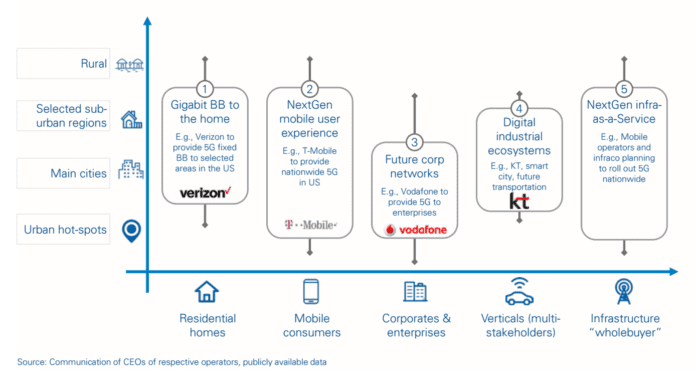In a new report, titled “5G Deployment Models are Crystallizing,” Arthur D. Little researchers attempt to answer the question on all of our minds. How do we get from where we are today to a 5G future enabling all of the wild telemedicine, mobile VR and autonomous robot-type applications that require ultra low latency and multi-gigabit throughput?
Well, for starters, we get there slowly, over time, but in terms of specific deployment scenarios, Arthur D. Little Managing Partner Karim Taga, along with partners Glen Peres and Richard Swinford, lay out five deployment models, the first of which tracks with consensus that early deployments will focus on fixed wireless access as a way to solve the last mile problem with fiber. Here are the the five deployment models outlined in the new report:
- “Provide gigabit broadband to residential homes and an effective last-mile complement to existing fiber or cable networks.
- “Deliver a next-generation, nationwide mobile experience that enables new use cases driven by virtual reality, tactile internet, etc…
- “Deliver highly reliable, low latency connectivity and solutions, improving both efficiency and productivity for corporates.
- “Enable digital industrial ecosystems with machine-to-machine connectivity, facilitating new service ecosystems with multiple partners, providers and end users.
- “Deliver next-generation infrastructure-as-a-service for the entire country.”
As to fixed wireless access, both AT&T and Verizon are actively trialling that technology using millimeter wave frequencies.
Click here to take a look at the paper, and click here to watch Taga moderate a panel titled “Creating a digital IoT future,” during the Enterprise IoT Summit.

